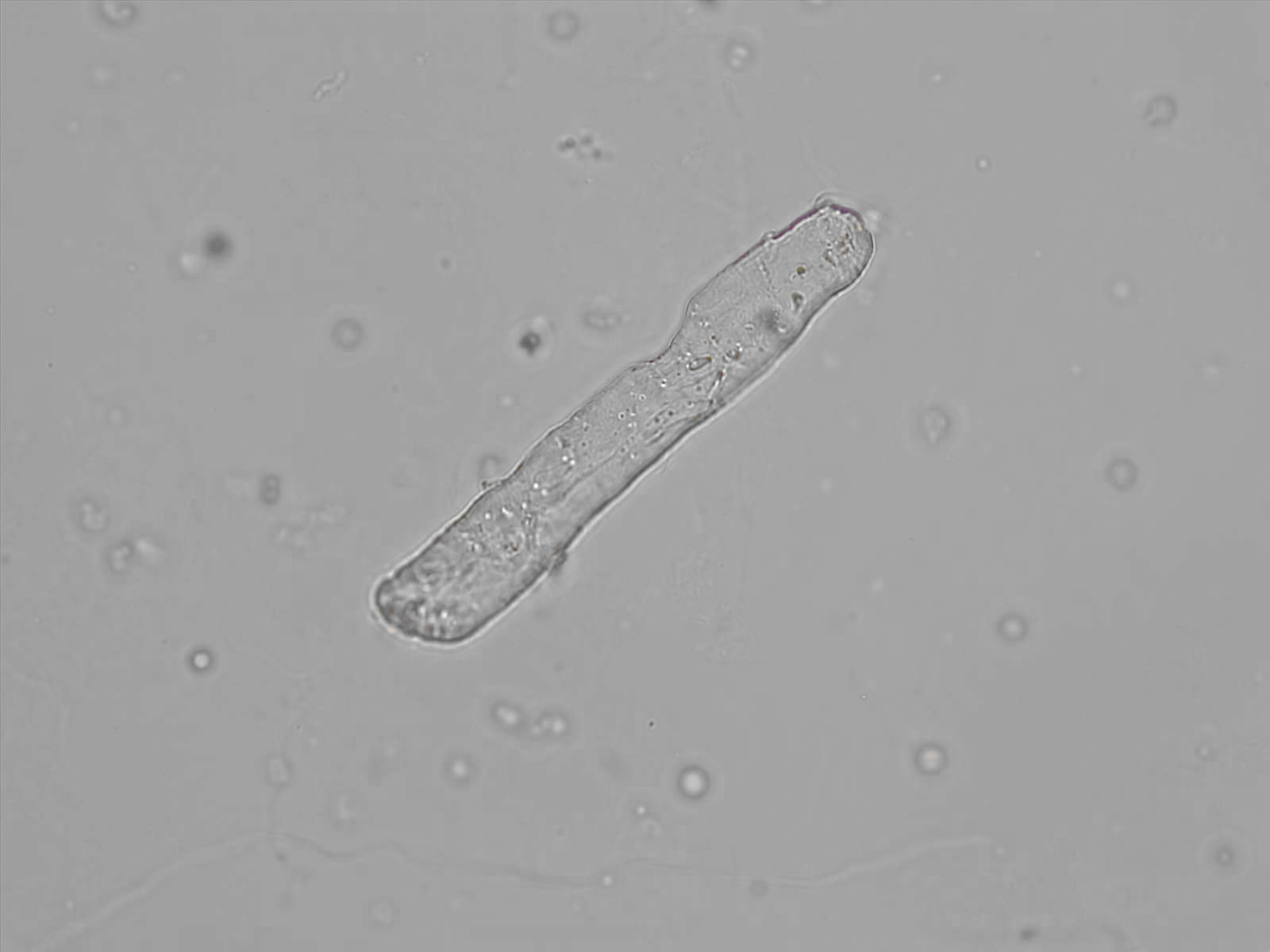Waxy cast
Synonyms: Renal failure casts, waxy
Casts are elongated structures formed in the renal tubules and composed mainly of uromodulin, also known as Tamm-Horsfall protein. This glycoprotein is secreted by cells in the ascending Lis of Henle and the distal tubule segment. The formation of casts is promoted by acidic pH and concentrated urine, conditions that allow the precipitation of uromodulin in a gel-like structure. During their formation, casts can enclose other components from the tubular fluid, such as cells, fat droplets or granular (granular) debris, creating different types of casts. In a sense, therefore, a cast can be considered a "biopsy" of the part of the tubule in which it is formed. Casts are visible microscopically, usually under bright-field microscopy, but their detection depends on their composition and transparency.
A waxy cast is a broad, dark-appearing, homogeneous, fine-granular, and strongly light-refracting cast with often sharp, broken, or indented edges. The exact origin and composition of waxy casts is not yet fully understood. One possibility is that they arise from hyaline casts that degenerate under changing urinary conditions. Another possibility is that cell or fat casts degenerate into a waxy structure during delayed urine flow - typically in severe acute or chronic kidney failure. The presence of waxy casts is always pathological and indicates severe kidney damage.









































































